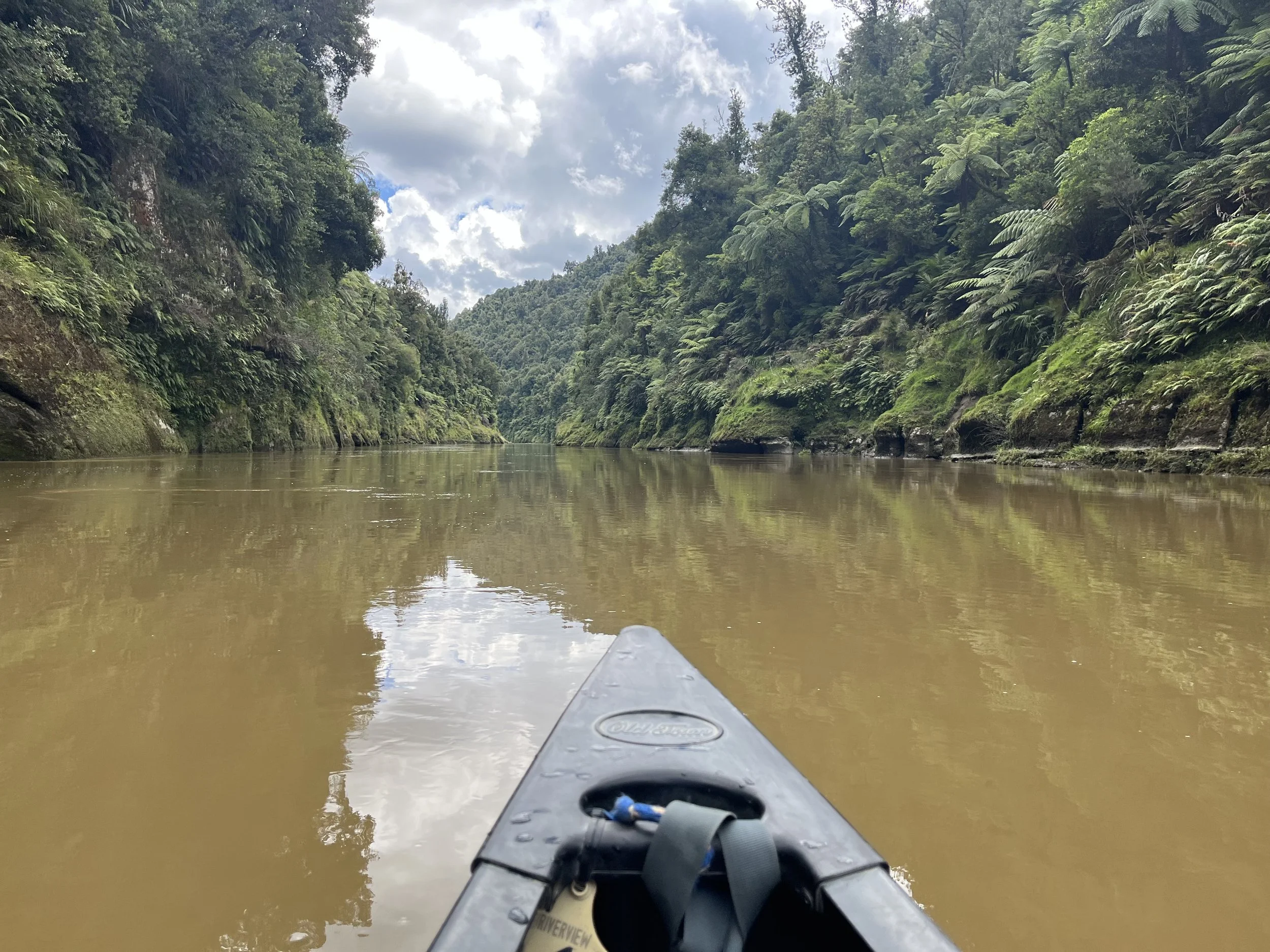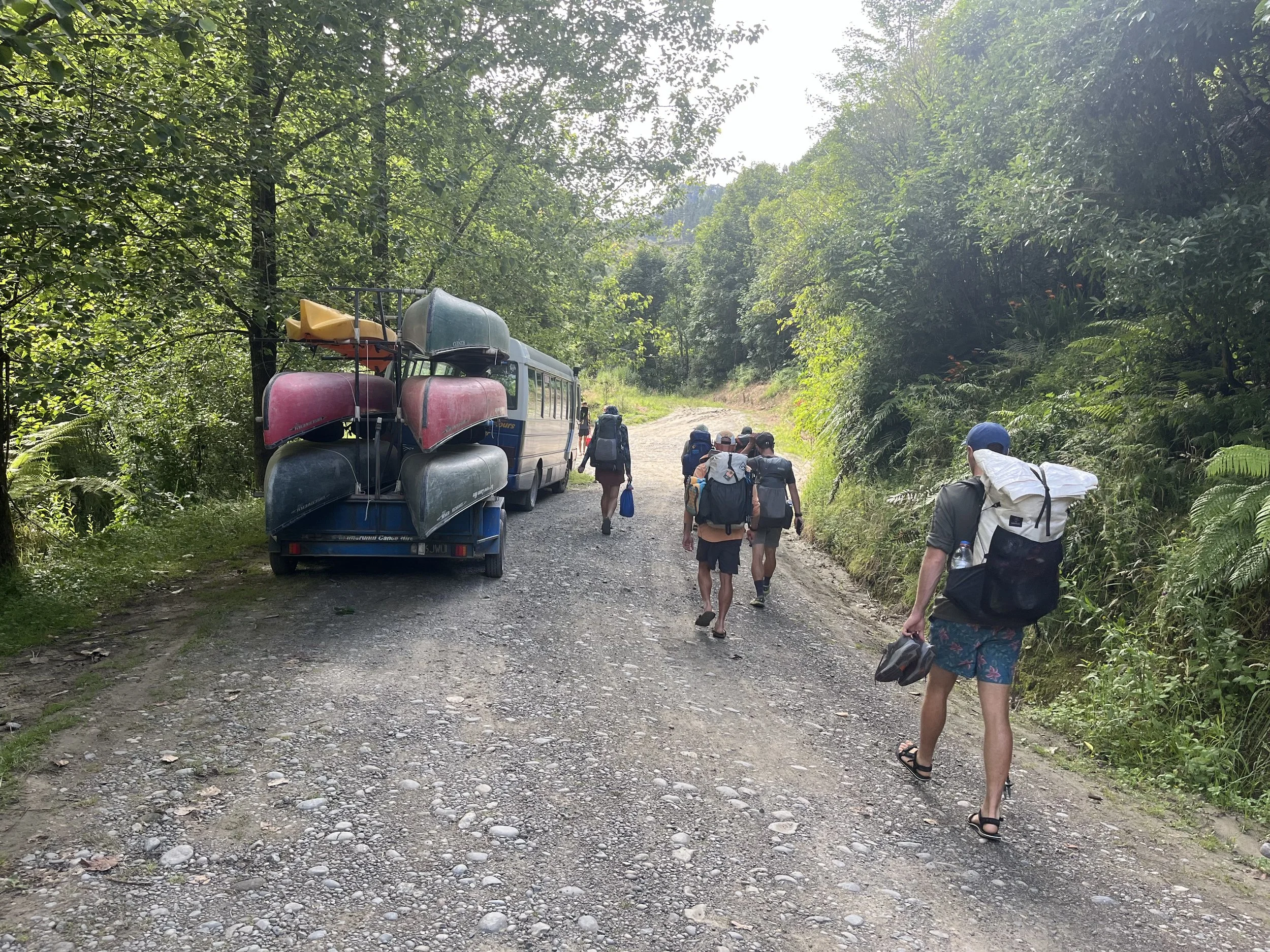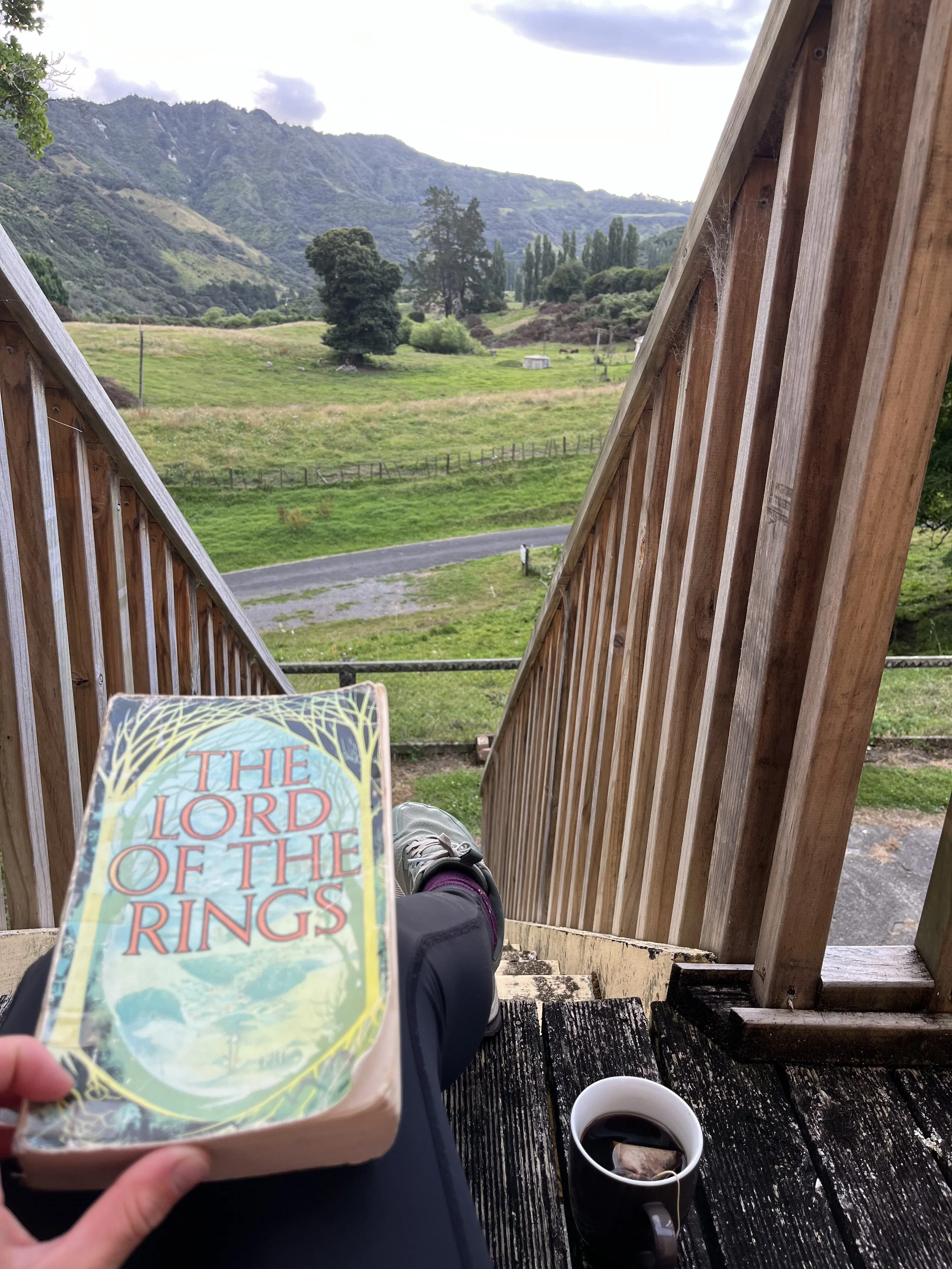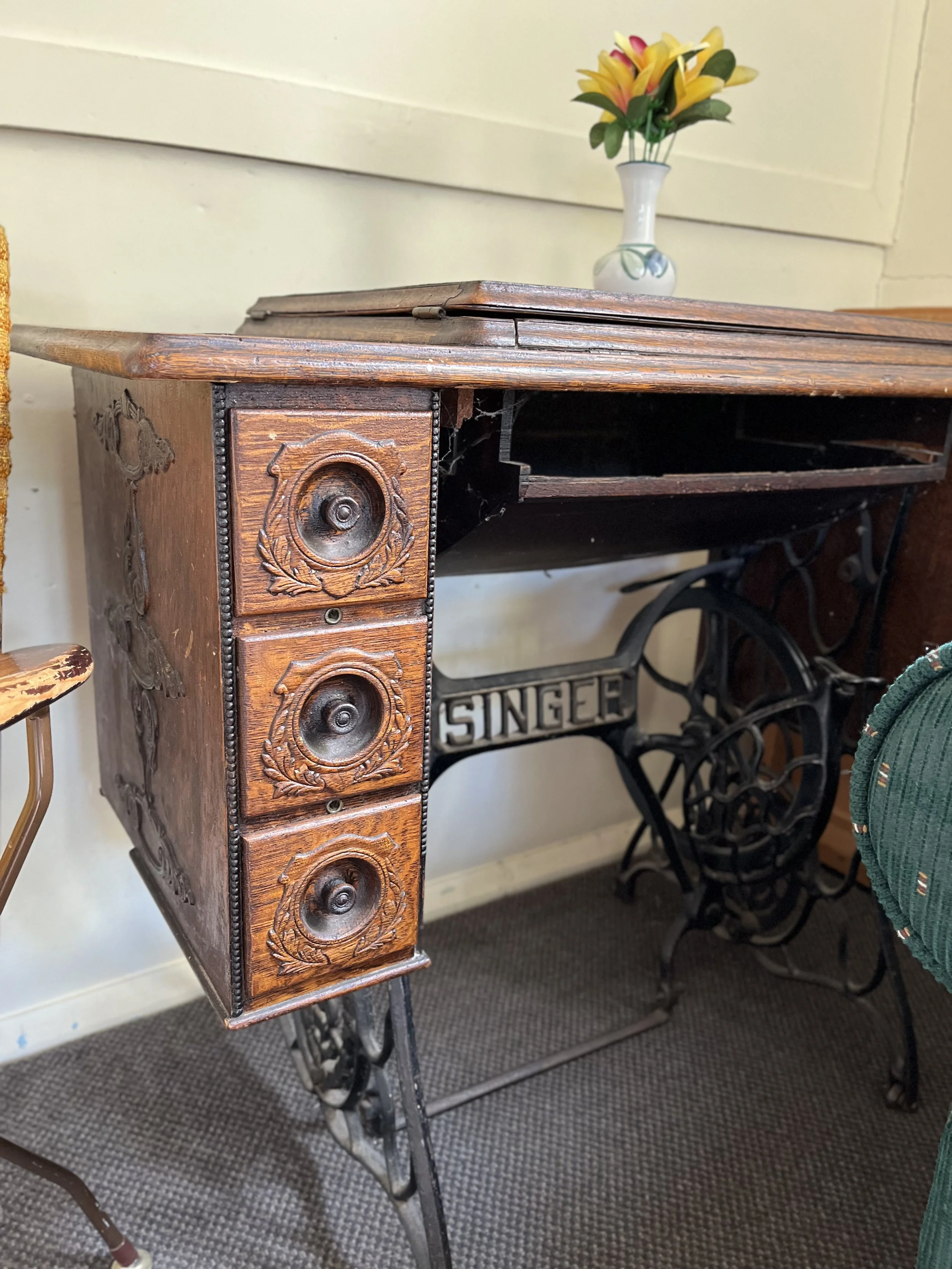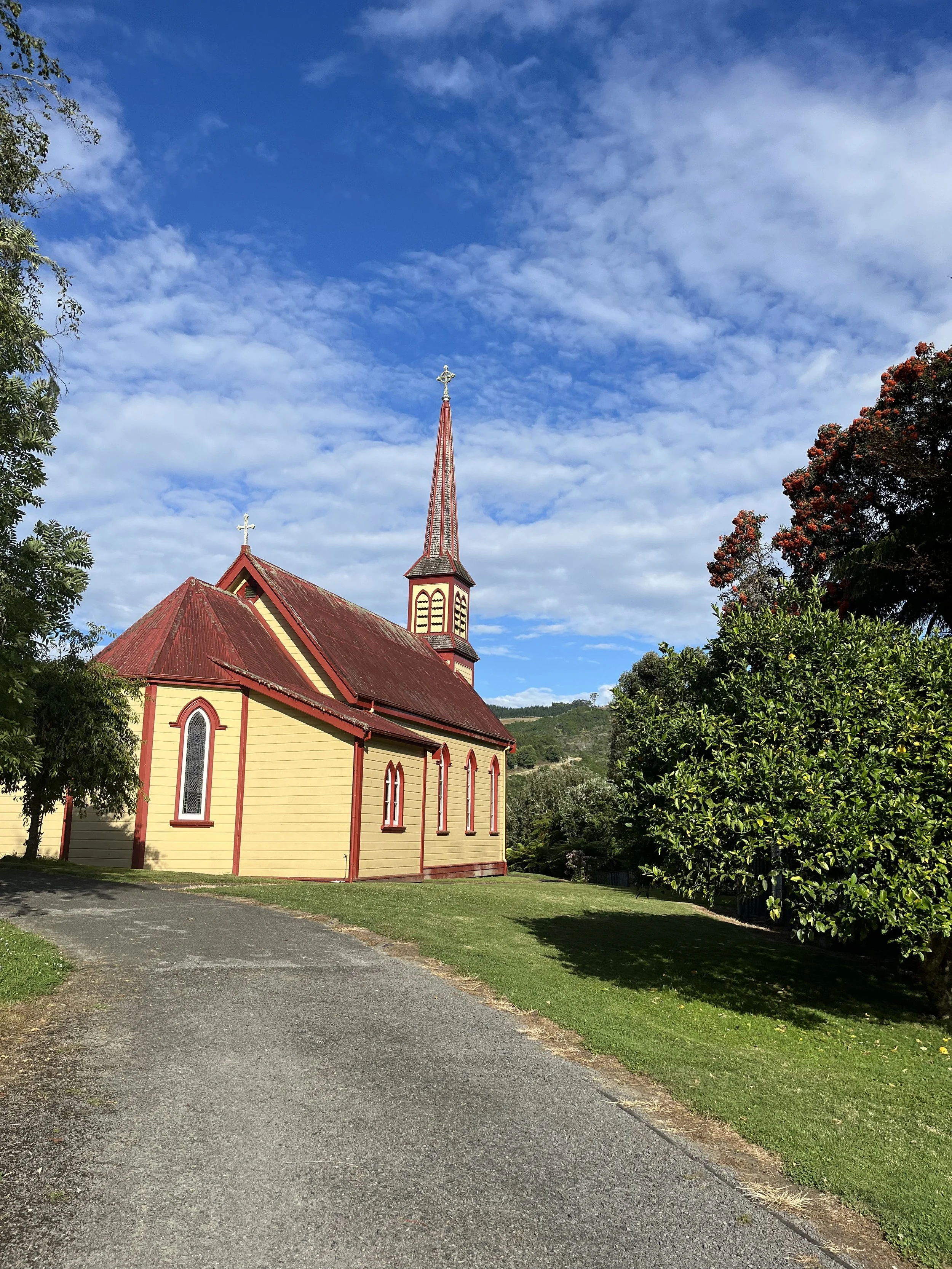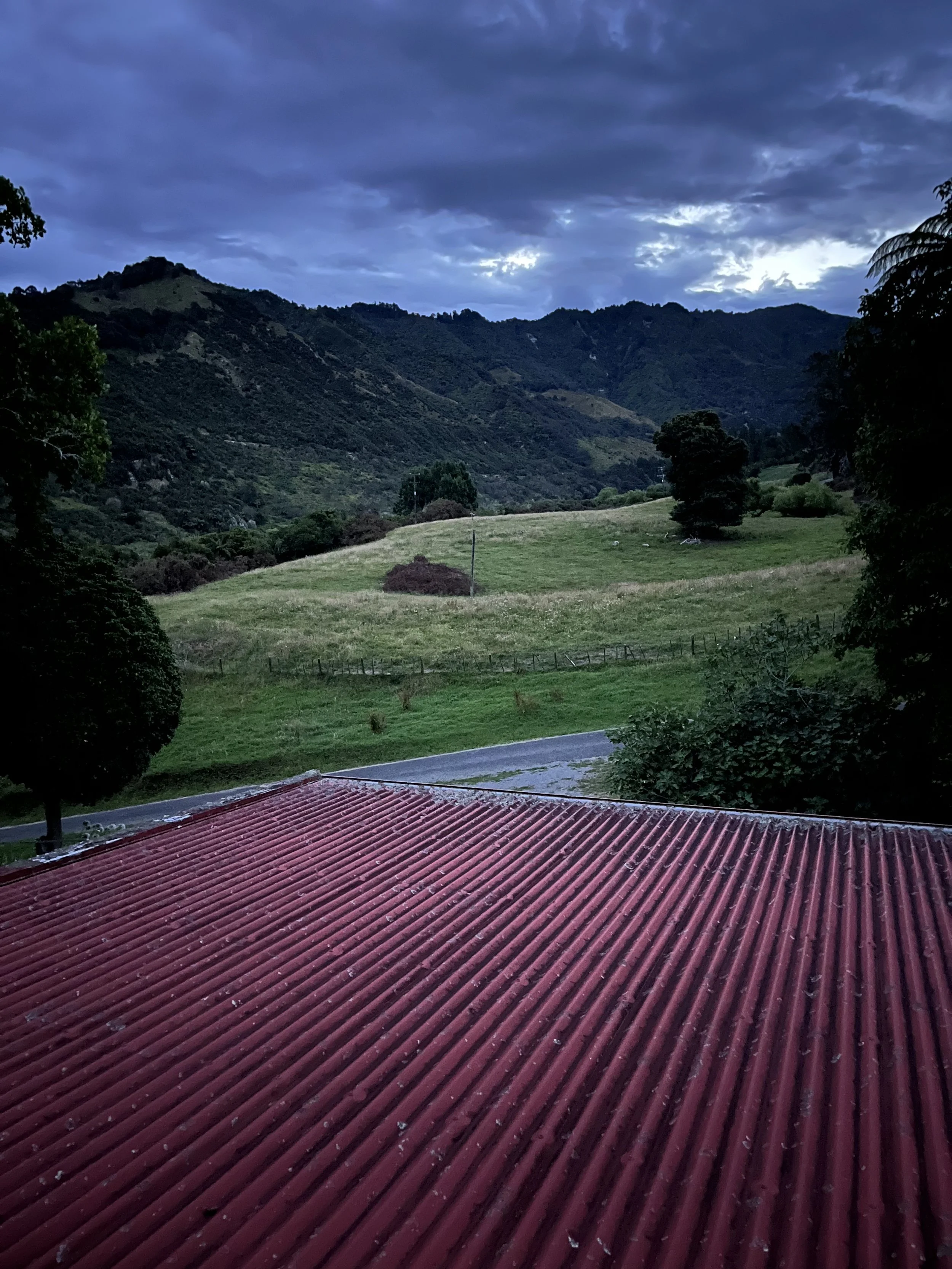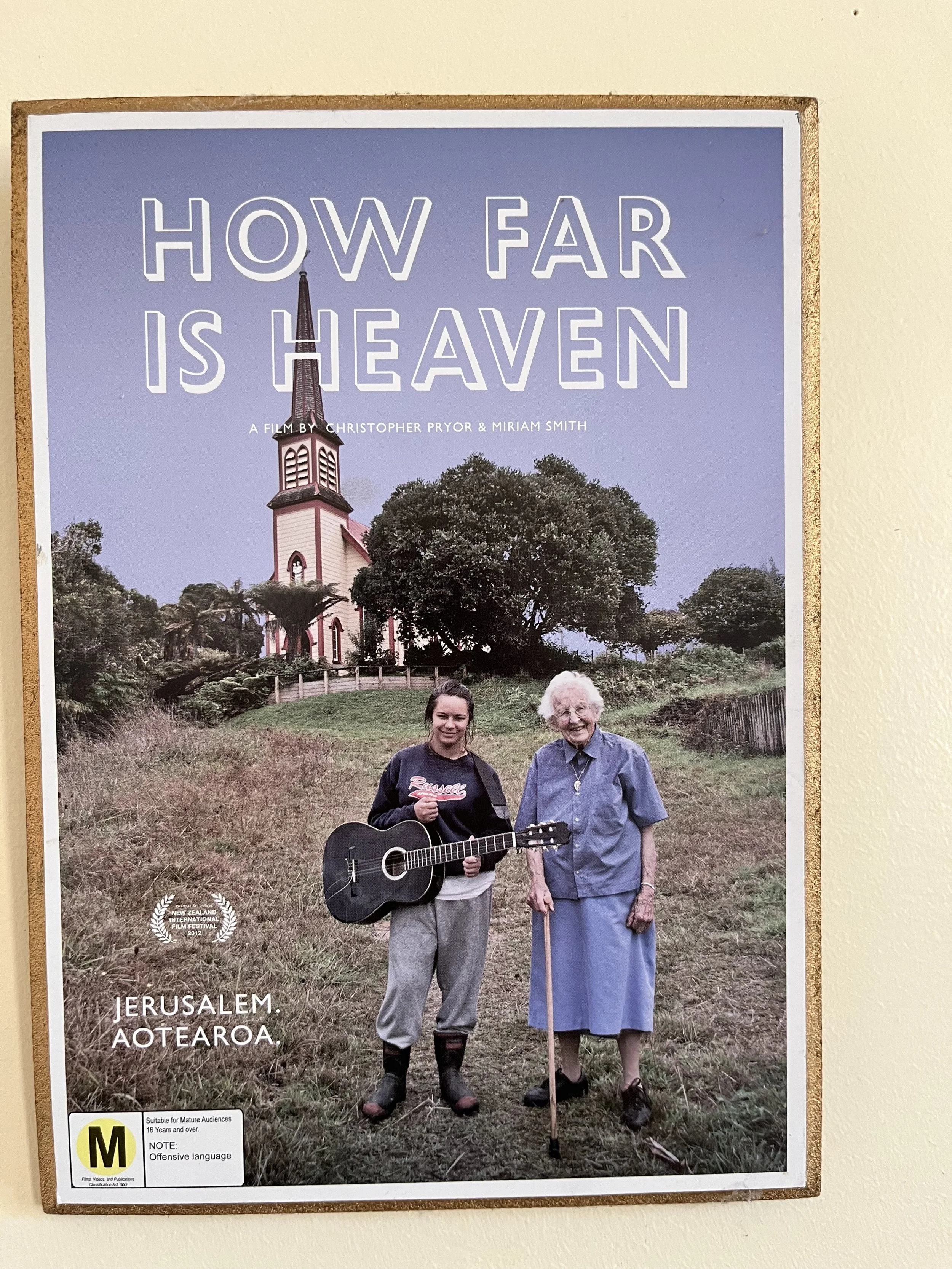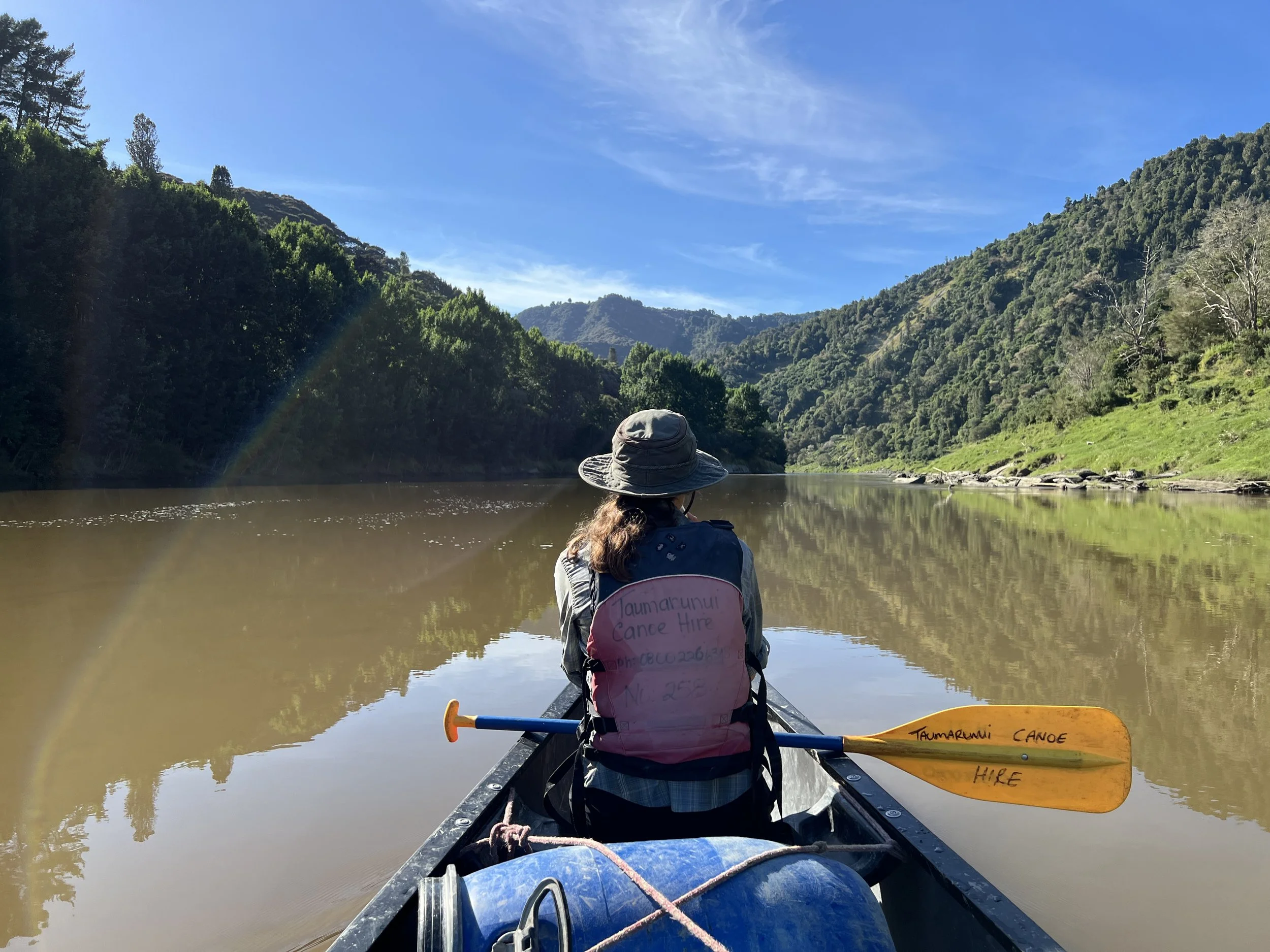Canoeing the Whanganui River
We finished biking the Timber trail and started walking towards Taumarunui town. It promised to be a long 20km tarmac walk. Since I “broke” and started hitching already a while ago on the North Island, I wasn’t opposed to the idea of not having to walk the tarmac in close to 30 degrees Celsius heat. Shortly after I started walking, a van driven by the bike ride company pulled over. Inside – a couple of my hiker friends.
- Would you like a ride?
- Sure!
Soon we were in town, shopping for the canoe trip. We were told to have a 7-day supply despite the trip normally taking 4 days, because it wasn’t unheard of to wait out the water levels rising in one of the campsites. I decided to shop for 5.5 days. 7 seemed like an overkill. The best part about this resupply was that you didn’t have to care about weight. You won’t be carrying it on your back this time, so onto the cart went cans of coke, whole fruit and non-dehydrated meals (soups, finally!). In the shop we ran into a bunch of other hikers and once we shopped and came back to Taumarunui Canoe Hire it was clear we have caught up with a small bubble. Up till now I was hiking either alone or with no more than 3 other hikers, and now there were around 17 of us there. Canoe hire company has guided us through the registration and booking process and we went to set up tents on their grounds and fill our barrels with the food we bought. Then – a swim in the river, a chat with fellow hikers and the next morning we continued on trail towards the Tongariro crossing. You only book a canoe trip from Taumarunui and then there is another 5 days of walking before you reach Whakapapa village, where you get the canoe and start the journey (although there is an option of starting in Taumarunui which means you’d be missing out on Tongariro crossing).
For a lot of the hike, it seems, we were threatened by some “big storm coming”, so, naturally, a lot of planning revolved around avoiding it. Funny enough, none of those storms ever came, or if they did, it was not more than just a regular rainy day.
Whanganui river canoe trip was one of those. It rained shortly before and it looked like was going to rain more on January 16th, the day before our planned departure, so Taumarunui Canoe Hire kept sending us messages that the trip could potentially be cancelled. It wasn’t, but the river looked like a flooded latte. I actually quite liked that color. It contrasted well with the rainforest around it and looked “wilder”. The downside (or maybe the upside?) to it was that due to water levels being a bit higher, it wasn’t actually wilder, instead, it smoothed out the currents and they weren’t as strong. We’ve watched a whole video on the treacherous turns we had to remember and how to successfully navigate white waters. There was even this famous 50/50 place named supposedly because only 50% of canoers manage to get through it without toppling over. We kept anticipating it, but somehow didn’t even notice it. There were a couple of fun places with waves coming from all directions, and sometimes the nose of the canoe would splash wildly into the water, sending a wave of cold river water directly on me, but overall the river was pretty smooth to the point it got rather boring towards lunchtime of the second day.
First campsite we were booked into was Mangawaiiti. We pull in, almost fall into the river when exiting the boat (the banks are hilly and pure, slippery mud) and realize we have to heave our barrels up a hill to the campsite. Each of us has two of those, weighing about 15 kg (I guess?). It’s a short hill, but steep, so you huff and puff, and laugh at yourself shopping for heavy things, because “you won’t be carrying it on your back”. One by one, the 17 of us park the canoe and reach the hilltop where we find a big family (or a group of them) with castle-sized tents taking up almost every flat spot, having claimed the remaining free space with their camping chairs, happily sitting in a half-circle, their kids playing ball, unconcerned about a bunch of hikers trying to set up their tiny tents on the grassy, slanted spots around the castle city. Eventually, when all of us were set up, more people we don’t know started showing up and the family were forced to squeeze a little and cede some of their territory to accommodate the new arrivals.
That evening we have decided we’ll do the trip in 3, not 4 days, so early the next day we paddled on with our destination being Jerusalem/Hiruharama Convent. That was one of the highlights of the river trip for me. Historical, bright yellow wooden buildings – a church and the convent, a lemon tree in the backyard, a giant tree and a horse by the entrance. Once you enter, you feel as if you have really become a nun. A spacious building with well-equipped kitchen, piano in the living room, photographs on the walls and colorful crocheted throws covering each armchair. Upstairs is sleeping quarters of the nuns, all painted sky blue, beds in neat rows, each bed with an individual curtain hanging of a round metal railing. It was just the three of us staying there. The rest of the canoers decided to stick to the plan (or do a bigger day the next day). The only pain in the butt was again, carrying the barrels half a kilometer to the convent, a trip that, as we discovered the next morning, was not necessary if we had parked not on the rocks but 500m earlier, at a little clearing.
The next day we planned to reach a campsite called Hipango Park, which wasn’t marked on Farout app, but was approximately at kilometer 1347 on that big loop the river does before reaching Whanganui town. The sign was broken, but you couldn’t miss it – it has a wooden jetty on the right bank. We pulled the boat onto the jetty in case water level rises with the tide (since here the river is affected by tides, being close to the ocean) and yet again hauled our barrels uphill. Tonight, was going to be a feast, and even after that, there would be enough food to get me through the next section. I’ve travelled almost an entire Island and still haven’t figured out how much food to buy on my resupplies. TA kept surprising me with being either harder or easier than anticipated. 20 km one day could be an easy stroll while the next day, same distance could exhaust you beyond comprehension. A trail like that is not easy to plan. At Hipango, we caught the group that had departed a day ahead of us, and some of our own group has caught up with us, with stories of their unfortunate overturn, in which they lost most of their possessions.
Hipango Park campsite
We parked at Top 10 Holiday Park in Whanganui the next day around noon. Those last couple of hours were the most boring – the current was almost non-existent (even though we timed it to make the most of the tides), so it was a continuous paddle. My arms were not happy they were subjected to three and a half days of paddling without any prior training, but my legs got the much-needed rest.
I checked the weather – I had a perfect window for my side trip. I booked a bus to Stratford and was going to visit Syme Hut on the side of Mt. Taranaki tomorrow. The trip that ended up being one of the favorite things I did in New Zealand.
My impressions of the Whanganui river experience? Maybe it was the flooded river and lack of currents, maybe the fact that I like walking more than anything water related, but I expected it to be more fun. It was a rather costly trip that got me pretty tired, slightly sun-burnt and, being an introvert, in dire need of alone time (having shared a 2 meter space for 3 days in a row with another person. Not that there was something wrong with the person, he was my friend. My social battery is simply pretty weak). It was good to have a break in walking, and floating between the two green jungle walls was beautiful, but I’d prefer it to be a two-day experience. Maybe canoeing to Pipiriki and taking a bike is an option for someone like me.
